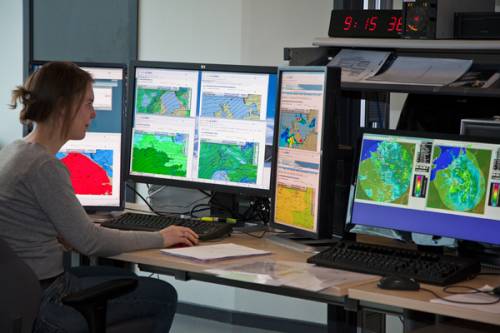How meteo affects runway usage
Weather conditions play an important role in air navigation. Accurate weather observations and forecasts are key elements in the safety of air traffic. In particular, wind, visibility and thunderstorms are decisive factors for runway selection.
How wind affects runway usage
For safety reasons, aircraft preferably take off and land facing the wind. That way, the wind reduces their speed to a minimum when they land and ensures their lift when they take off. In addition, crosswind must be limited to prevent aircraft from deviating from their trajectory.
At the airport, near the runways, we use anemometers to measure wind speed and direction on the ground. When operating on a particular runway, wind is considered to have 2 components: headwind (or tailwind ) and crosswind.
The following wind components are taken into account when selecting runways:
-
Headwind/Tailwind: the wind component parallel to the runway if it is in the opposite (headwind) or same (tailwind) direction as the aircraft's movement .
-
Crosswind: the wind component perpendicular to the runway. Whether it is left or right depends on the side from which the wind comes relative to the direction the runway is used.
Besides the wind at ground level, wind along the flight path - at an altitude - needs to be considered.
This wind is called
wind aloft
and is measured by approaching aircraft. Under certain weather conditions, winds in the lower layers of the atmosphere (aloft) can differ significantly from surface winds. It is therefore necessary to take this into account for the safety of air navigation.
Meteorological observations and historical data prove that the wind at Brussels Airport blows mainly from the southwest. Those results may vary somewhat over the years of course, but the general trend remains the same. The preferential runways 25R, 25L and 19 are faced towards this prevailing wind direction. The second most common wind direction is northeast.

Other factors that affect runway usage
In the event of reduced visibility, flight and air traffic control procedures must be adapted. Only runways equipped with specific navigation aids can then be used. In the presence of thunderstorm clouds, take-off and landing runways should be selected so that pilots avoid these dangerous areas of turbulence and lightning.